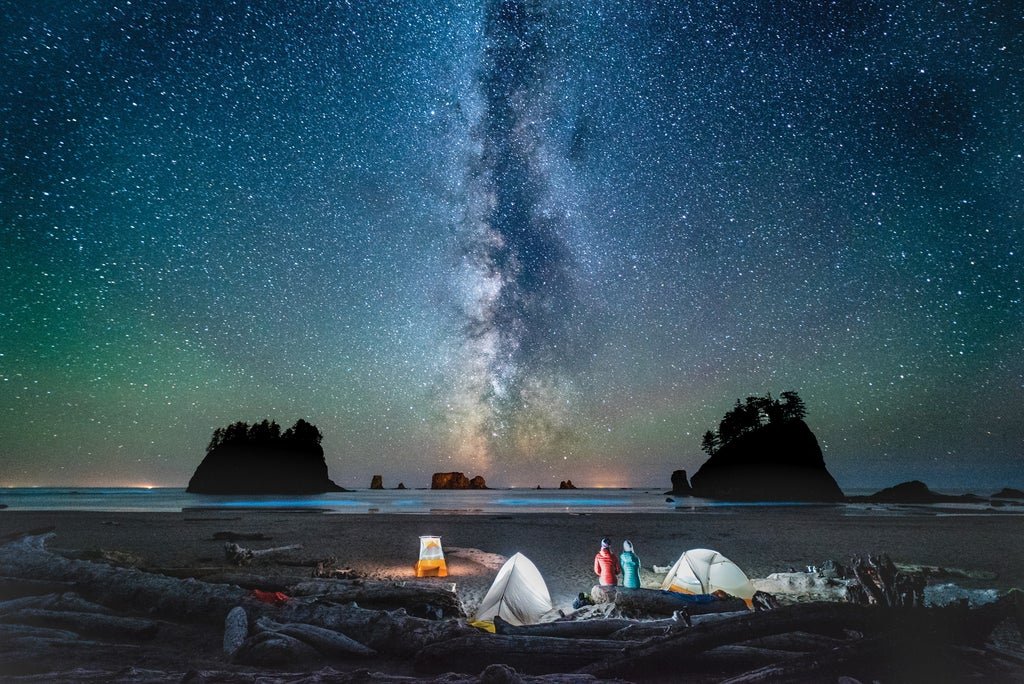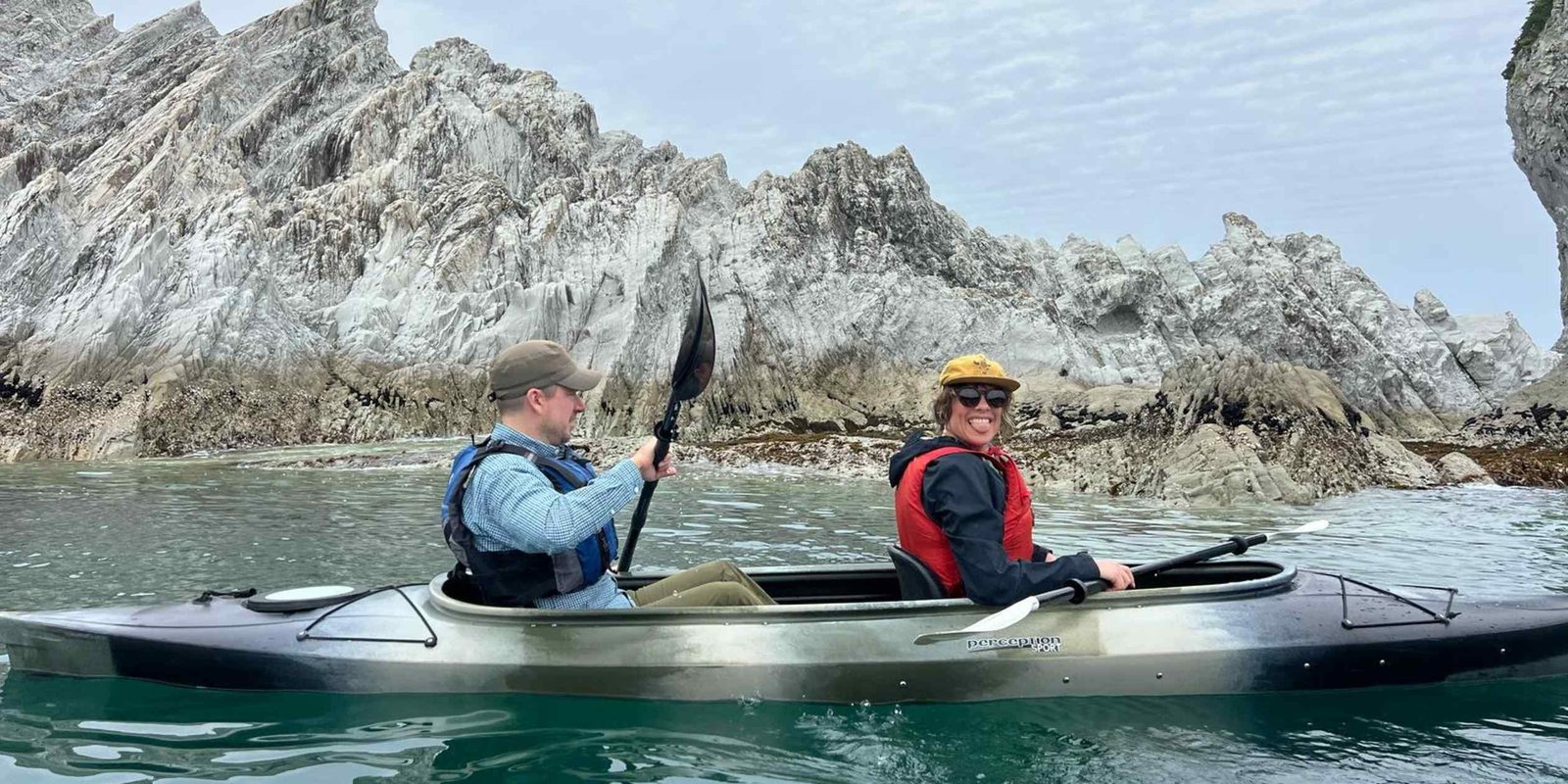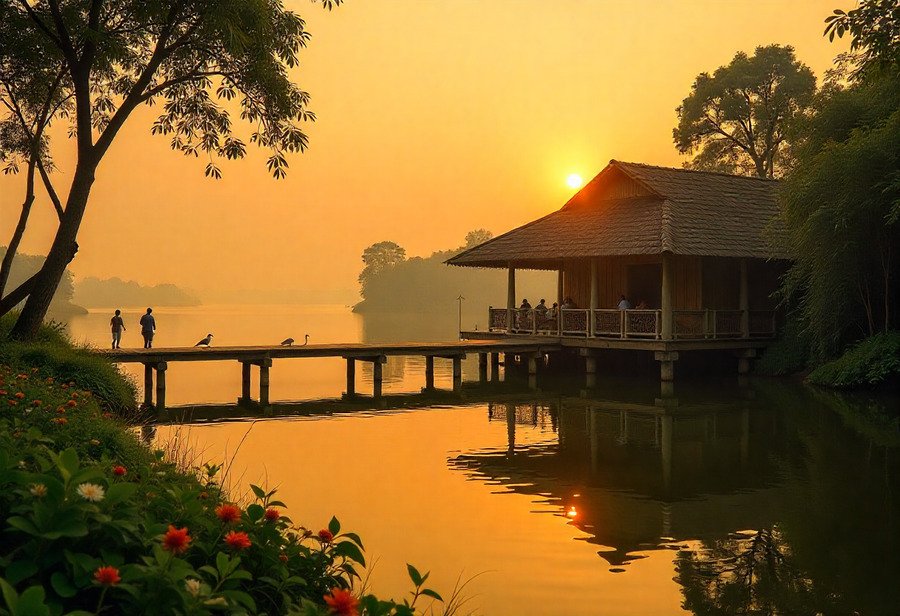SENDAI, Japan — The tourism sector in Japan’s northeastern Tohoku region is working to establish adventure travel, a type of experiential tourism that focuses on outdoor activities and cultural interaction. With a global market size for such tourism estimated at more than $400 billion, Tohoku expects adventure travel to play a key role in attracting overseas visitors.
Ways to Travel
See Bioluminescence

“], “filter”: { “nextExceptions”: “img, blockquote, div”, “nextContainsExceptions”: “img, blockquote, a.btn, a.o-button”} }”>
Heading out the door? Read this article on the new Outside+ app available now on iOS devices for members!
>”,”name”:”in-content-cta”,”type”:”link”}}”>Download the app.
At first, I thought it was a trick of the eye. Or maybe a reflection as the sunset faded. Or did someone in camp flash a headlamp toward the waves?
But as dusk settled and the light grew stronger, I could tell it was no illusion: Every time a wave broke, the surf glowed green as if lit from within. The water got brighter as the night got darker, leaving a sparkling sheen on the sand as each wave receded. And the show was just getting started.
I was camping on Isla Carmen off the coast of Baja, night one of a winter sea kayaking adventure in the Sea of Cortez, when my friends and I chanced upon a bloom of bioluminescent plankton. The tiny organisms glow in the dark when jostled by the current—or a hand or paddle—and can light up the ocean like Christmas lights. Water temperature, seasonal currents, and pH levels all affect the timing and intensity of bioluminescent plankton and algae blooms, so hitting the phenomenon just right is mostly good luck.
For us, that first night was just the warm-up. The bioluminescence tripled in brightness on night two and peaked on night three. We went snorkeling after dark and watched the water explode with light at every stroke. I sat on the sandy bottom and waved my hand in front of my mask, creating brilliant streaks of glowing bubbles. I laughed and almost choked on saltwater. Was this the coolest thing I’d ever seen?
Actually, no. It got even better when we jumped in our kayaks. Each paddle stroke lit the sea like a green lightning strike, and the boats left wakes of light. Glowing streaks scored the ocean even as the kayaks vanished in the darkness.
Some of the best experiences in the outdoors can only be had if you’re willing to put in the effort. Not this one. It’s easy. But you have to be in the right place at the right time.
DO IT Bioluminescent bacteria and plankton can be spotted on both coasts in the States, though are more abundant (and predictable) in warmer waters like off the coast of Florida or in Puerto Rico. Stage a four- to eight-day sea kayaking trip in the Sea of Cortez (like the author) by circling Isla Carmen in Loreto Bay National Marine Park.
Ways to Travel
Northeastern Japan pushes adventure travel for global tourists

Efforts center on creating experiences that engage with nature and culture
Japan’s Tohoku region is working to offer more trekking, paddling and other adventure travel activities. (Tohoku Tourism Promotion Organization)
HAYATO SAWA
August 10, 2025 09:00 JST
Ways to Travel
Sundarbans Introduces Ali Banda Eco-Tourism Center as a Must-Visit Destination for Nature Lovers Seeking Peace and Adventure

Published on
August 9, 2025 |
The Sundarbans, a UNESCO World Heritage site and the largest mangrove forest in the world, is poised to become an even more sought-after destination as the Ali Banda Eco-Tourism Center undergoes significant development. This new initiative, designed to attract both domestic and international visitors, is a part of the larger effort to boost eco-tourism in the region.
Known for its extraordinary biodiversity and untouched beauty, the Sundarbans has long been a haven for nature lovers and wildlife enthusiasts. To enhance the travel experience while promoting conservation, the Department of Forest Division has focused on improving infrastructure at key eco-tourism spots within the Sundarbans. Ali Banda Eco-Tourism Center, located in the Sharankhola Range, is now at the center of these plans.
Ali Banda offers a quick and affordable getaway for travelers seeking to explore the mangrove forest. Visitors can embark on a scenic journey, reaching the center in just under an hour from the Sharankhola Range headquarters by engine-powered trawler. For those with limited time, the Ali Banda Eco-Tourism Center, paired with the nearby Supati Wildlife Sanctuary, presents an ideal day-trip option to experience the wild beauty of the Sundarbans.
The center has been carefully designed to cater to the needs of tourists without disrupting the delicate ecosystem of the area. A 50-foot-high observation tower has been installed, offering sweeping panoramic views of the vast mangrove forest. To ensure a deeper connection with nature, a one-kilometer footpath has been developed, enabling visitors to explore the area on foot and experience the forest up close.
In addition to these enhancements, several other facilities have been established to provide a more comfortable and engaging experience for visitors. These include public restrooms, a circular hut for resting, souvenir shops, ticket counters, paved walkways, a sturdy concrete jetty, and two crocodile ponds. The addition of a fenced enclosure for deer adds a unique touch to the center’s wildlife offerings. The proximity of Ali Banda to local communities has made it an appealing destination for travelers seeking a convenient yet immersive nature experience.
The accessibility and affordability of Ali Banda make it a standout option for those looking to visit the Sundarbans without straining their budget or time. Travelers from Dhaka and other regions of Bangladesh will soon have an easy opportunity to take a day trip to this developing eco-tourism destination, which promises an unforgettable encounter with nature.
As part of the broader strategy to promote sustainable tourism, the Forest Division has restricted access to more remote sections of the Sundarbans, including popular spots like Kotka, Kochikhali, and Hiron Point. This step is aimed at preserving the ecological balance and ensuring the long-term sustainability of the region. Meanwhile, new eco-tourism centers have been established at locations like Dhan Sagar and Harbaria, further expanding the eco-tourism network in the region.
Once fully operational, the Ali Banda Eco-Tourism Center is expected to draw significant numbers of visitors, making it a cornerstone of Sundarbans eco-tourism. The development will also provide a boost to the local economy, generating employment and business opportunities for nearby communities.
The Sundarbans is renowned for its rich array of wildlife, including the majestic Royal Bengal Tiger, Irrawaddy and Ganges dolphins, and countless bird species. With growing interest in eco-tourism, other well-established spots in the Sundarbans, such as Karamjal, Harbaria, and Hiron Point, continue to be popular with tourists.
As the Ali Banda Eco-Tourism Center nears completion, plans for further infrastructure development and attractions will ensure that the destination remains at the forefront of sustainable tourism. This initiative reflects a strong commitment to preserving the Sundarbans’ unique ecosystem while providing visitors with an immersive and eco-friendly experience that showcases the region’s unparalleled natural beauty.
Ways to Travel
Dog Owners Urged to Check Beach Rules Before Booking Cornwall Holidays

As August reaches its peak holiday season, Park Holidays UK is urging dog owners to double-check local beach rules before booking or heading to the coast. Seasonal restrictions are now in place across many parts of the UK, with dozens of popular Cornwall beaches included.
Cornwall’s Seasonal Dog Bans
In Cornwall, restrictions typically run from July to 31st August, enforced daily from 10 am to 6 pm. Several beaches have full summer bans during this time, including:
-
Polzeath Beach
-
Porthmeor, Porthgwarra, Porthgwidden, Porthcurno
-
Porthleven West, Sennen Beach, Swanpool and Trevone
Violating these Public Spaces Protection Orders can lead to fines of up to £1,000. View our article for a full list of dog beach restrictions here.
Warnings for Other UK Holiday Destinations
Similar restrictions apply elsewhere in the UK. In East Sussex, major seaside towns such as Brighton & Hove, Eastbourne, Seaford, Hastings, and parts of Bexhill and Camber Sands have bans from 1st May to 30th September.
In Wales, Caswell Bay in Swansea enforces a ban from 1st May to 30th September, while across the UK hundreds of beaches operate seasonal restrictions during this period.
Advice from Park Holidays UK
Kelly Johnstone, Head of Brand & Content at Park Holidays UK, said:
“We understand dogs are part of the family, and nothing beats that seaside splash! But with beach dog bans active this August, it’s really important to check local rules before you book or travel. That helps avoid surprises and keeps everyone safe and welcome.
“Many of Park Holidays UK’s coastal holiday parks remain dog-friendly, often situated near beaches that are off-leash outside restricted hours, or totally accessible to dogs year-round, such as; St Osyth Beach near Seawick Holiday Park in Essex, or Pevensey Bay Beach near Pevensey Bay Holiday Park in Sussex*”
Planning Ahead for a Stress-Free Holiday
Park Holidays UK encourages dog owners to plan trips around these restrictions and recommends checking local council websites or using resources such as The Beach Guide for up-to-date rules before travelling.
This approach ensures that every member of the family – including the four-legged ones – can enjoy a safe and welcome break by the sea.
-

 Brand Stories3 weeks ago
Brand Stories3 weeks agoBloom Hotels: A Modern Vision of Hospitality Redefining Travel
-

 Brand Stories2 weeks ago
Brand Stories2 weeks agoCheQin.ai sets a new standard for hotel booking with its AI capabilities: empowering travellers to bargain, choose the best, and book with clarity.
-

 Destinations & Things To Do3 weeks ago
Destinations & Things To Do3 weeks agoUntouched Destinations: Stunning Hidden Gems You Must Visit
-

 Destinations & Things To Do2 weeks ago
Destinations & Things To Do2 weeks agoThis Hidden Beach in India Glows at Night-But Only in One Secret Season
-

 AI in Travel3 weeks ago
AI in Travel3 weeks agoAI Travel Revolution: Must-Have Guide to the Best Experience
-

 Brand Stories1 month ago
Brand Stories1 month agoVoice AI Startup ElevenLabs Plans to Add Hubs Around the World
-

 Brand Stories4 weeks ago
Brand Stories4 weeks agoHow Elon Musk’s rogue Grok chatbot became a cautionary AI tale
-

 Brand Stories2 weeks ago
Brand Stories2 weeks agoContactless Hospitality: Why Remote Management Technology Is Key to Seamless Guest Experiences
-

 Asia Travel Pulse1 month ago
Asia Travel Pulse1 month agoLooking For Adventure In Asia? Here Are 7 Epic Destinations You Need To Experience At Least Once – Zee News
-

 AI in Travel1 month ago
AI in Travel1 month ago‘Will AI take my job?’ A trip to a Beijing fortune-telling bar to see what lies ahead | China
